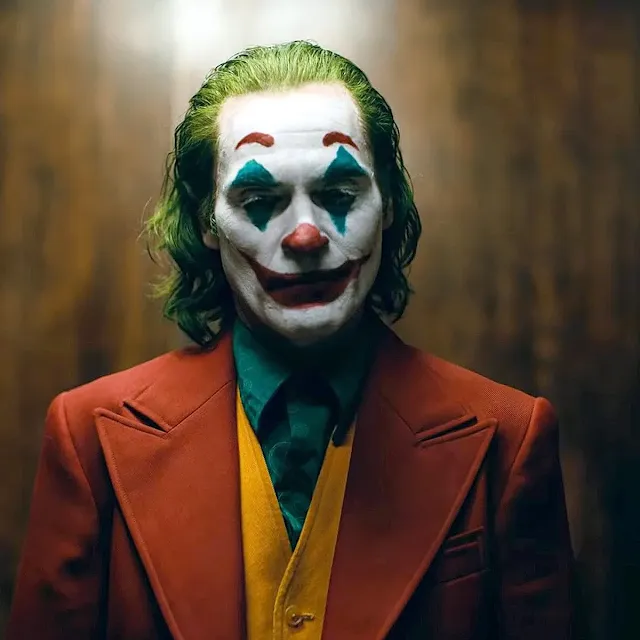Furthermore, the influence of Martin Scorsese's 1982 film "The King of Comedy" can be seen in the casting of Robert De Niro as the talk show host Murray Franklin. This clever nod not only pays homage to Scorsese's work but also creates thematic connections between Arthur Fleck's desperate pursuit of fame and the character of Rupert Pupkin in "The King of Comedy."
"Joker" is replete with subtle movie references that not only ground the film in its 1981 setting but also enrich the Batman mythology. The choice of movies playing at the theater, including "Zorro: The Gay Blade," "Blow Out," and "Excalibur," adds depth to the film's backdrop while suggesting the influences that shape Batman's persona. Of particular significance is the Zorro movie, traditionally tied to Bruce Wayne's origin story.
Paying homage to previous cinematic portrayals of the Joker character, "Joker" encapsulates the essence of the villain's legacy. Joaquin Phoenix's Joker suit design pays homage to Cesar Romero's rendition in the 1960s Batman series. Arthur Fleck's interaction with the cop car window alludes to Heath Ledger's Joker from "The Dark Knight." A poster of Murray Franklin transforming into a Jack Nicholson-esque Joker face playfully nods to Nicholson's iconic performance in Tim Burton's "Batman."
Expanding its references to encompass the broader Batman universe, "Joker" includes a scene set in Arkham State Hospital, a subtle nod to the infamous Arkham Asylum. References to the villain Ratcatcher and question mark graffiti in the hospital elevator hint at the larger rogues' gallery of Batman villains.
Delightfully obscure Easter eggs are scattered throughout the film, enriching the viewing experience for dedicated fans. The talk show's title logo echoes the font of "Batman: The Animated Series," invoking nostalgia for fans of the beloved show. The character Debra Kane, Arthur's social worker, serves as a tribute to Batman co-creator Bob Kane. Arthur's unsettling encounter with young Bruce Wayne near Wayne Manor slyly references the Batpole, an iconic element from the 1960s Batman series.
Moreover, "Joker" seamlessly incorporates more Easter eggs to heighten its intricacy. The comedy club where Arthur performs, named "Pogo's," alludes to the notorious serial killer John Wayne Gacy, who performed as "Pogo the Clown." The appearance of Alfred Pennyworth during the encounter between Arthur and young Bruce provides a deeper layer of immersion, enhancing the Batman universe's coherence.
"Joker" masterfully employs a myriad of Easter eggs and references to create a rich tapestry that ties the film to the broader Batman mythology. By drawing from diverse interpretations of the Joker character and paying homage to iconic moments in Batman's history, the film offers a multi-dimensional experience that rewards both casual viewers and dedicated fans with layers of meaning and connection.
Here's a list of Easter eggs and DC references found in the film "Joker":
- The
Killing Joke Influence:
- Arthur
Fleck's descent into madness mirrors the concept of "one bad
day" from Alan Moore's graphic novel "The Killing Joke."
- Arthur's
transformation into the Joker is reminiscent of the novel's exploration
of the Joker's origin.
- The
King of Comedy:
- Robert
De Niro's portrayal of Murray Franklin pays homage to his role in Martin
Scorsese's film "The King of Comedy."
- The
film draws thematic parallels between Arthur Fleck's pursuit of fame and
the character Rupert Pupkin in "The King of Comedy."
- Movie
References:
- Movies
playing at the theater (Zorro: The Gay Blade, Blow Out, Excalibur) set in
1981 anchor the film's time period.
- Zorro
movie references Batman's origin story as it's traditionally tied to the
event that leads to the Wayne family's murder.
- Joker
Character References:
- Joaquin
Phoenix's Joker suit design pays homage to Cesar Romero's portrayal in
the 1960s Batman series.
- Arthur
Fleck's interaction with the cop car window recalls Heath Ledger's Joker
from "The Dark Knight."
- Poster
of Murray Franklin transforming into a Jack Nicholson-esque Joker face
nods to Nicholson's "Batman" performance.
- Arkham
Asylum Connection:
- The
scene at Arkham State Hospital alludes to the infamous Arkham Asylum, a
key location in the Batman universe.
- Batman
Rogues' Gallery:
- Potential reference to Ratcatcher through news reports about "Super Rats."
- Question
mark graffiti in the hospital elevator hints at the Riddler's presence.
- Animated
Series Nod:
- The
talk show's title logo resembles the font from "Batman: The Animated
Series."
- Debra
Kane and Alfred:
- Debra
Kane, Arthur's social worker, pays tribute to Batman co-creator Bob Kane.
- Alfred
Pennyworth's appearance during the encounter between Arthur and young
Bruce Wayne connects to the Batman universe.
- Pogo's
Comedy Club:
- The comedy club where Arthur performs, named "Pogo's," alludes to the notorious serial killer John Wayne Gacy, who performed as "Pogo the Clown."
- Zorro
Connection:
- The
Zorro movie playing at the theater hints at Batman's inspiration for his
crime-fighting persona.
- Excalibur's
Significance:
- "Excalibur" movie's presence in the theater is a callback to its appearance in Batman's origin story as shown in "Batman v Superman."
- Dark Knight Returns Nod:
- Arthur Fleck's appearance on the late-night show parallels a scene from Frank Miller's "The Dark Knight Returns."
- LEGO
Joker Connection:
- Character
named Ethan Chase references the LEGO Joker from "The LEGO Batman
Movie."
- Amusement
Mile:
- Arthur Fleck's neighborhood is named "Amusement Mile," referencing the old amusement park from The Killing Joke.
















